Discover the industry’s interest in vegan leather and the unknowns in a global world where the demand for recyclable and renewable materials is increasing rapidly.
What is vegan leather called? Is faux leather vegan? Are artificial leather alternatives as durable as the real thing? What is vegan leather made with? Are vegan leather and faux leather the same thing? What are the alternatives to leather?
These questions are examples of those who are preoccupied with a new rising consumer group for healthy and sustainable consumption with the right choices. While veganism and vegans were once seen as a way of life and its few members, it has now become a considerable community. Moreover, their large numbers gave them the power to exert political and economic pressure.
Vegan alternatives, which once did not find a place even in restaurant menus, are now on the menu of every restaurant, and restaurants that only offer dishes made with vegan foods are also popular. In fact, veganism is more than just a diet, and it is increasing its power in the fashion world with the world’s demand for recyclable and sustainable.
What you need to know about Vegan Leather?
While ‘synthetic leather’ may seem unaligned with eco-friendliness and sustainability, the term is synonymous and used interchangeably with vegan leather. To be considered vegan, the material must be made from non-animal sources low on carbon footprint and cruelty-free.
Aside from the above, the sustainability standards set by the green movement view brands that support local farmers and small enterprises and are implementing ethical labour policies more favourably.
The earlier versions of vegan leather, such as PVC leather, are now less commonly used because of the harmful chemicals involved in production. Nowadays, it’s more common to see plant-based leather products.
One example is cactus leather, which is featured on the Willow Handmade UK Leather Goods Maker website. The brand uses 100% organic cactus to create its base material with the same aesthetic quality and durability as animal-derived leather. Aside from cactus, you may also find leather made from tree bark, mushrooms, leaves, and even fruit waste. Meanwhile, lab-grown leather is in its developmental stages.
Despite fundamental differences, vegan leather continues to evolve at a level that makes it indistinguishable from natural leather. From aesthetic value to texture and durability, plant-derived materials show great potential to become a reliable and equally competitive alternative to animal-based variants.
Continue reading to learn more about the growing demand for vegan alternatives in the fashion industry and how this force pushes the vegan leather industry forward.
>Being vegan is becoming a necessity for the future of our planet
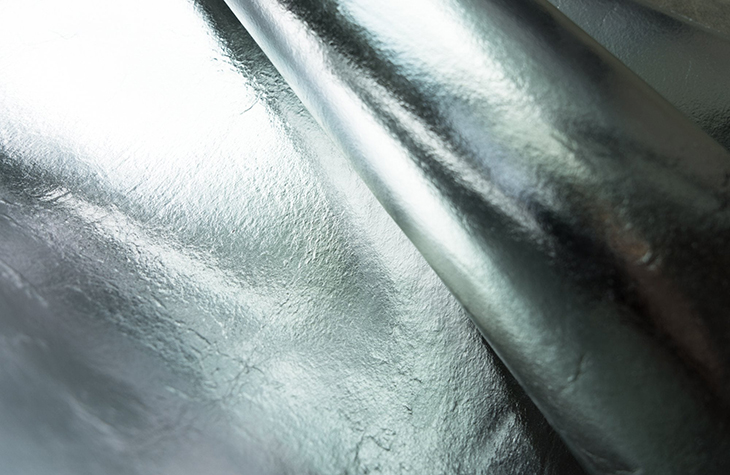
We live in a world where more and more people are refusing to consume products made from animals. The pressure on companies is greater than ever before. The fashion industry, in particular, is on the ball. Demand for products made using recycled and recyclable, renewable and/or responsibly sourced materials is skyrocketing. The fashion industry, which is cornered by another regulation day by day, feels guilty mostly because of products made from animal skins.
The use of fur and leather in general is so common all over the world that -just think- we come across a leather product everywhere in our daily life. There are many industries that use it, from shoes to bags, furniture to upholstery, accessories to clothing. And the fashion world isn’t looking to rid itself of that guilt anytime soon. Because leather is a material that interlocks multiple industries, and it is not possible to fix all these procurement processes overnight.
“All-vegan leathers, which use fewer resources to manufacture, have been perfecting themselves for years to replace real leather. And it’s time to take the stage.”
>Support from talented names of the fashion world
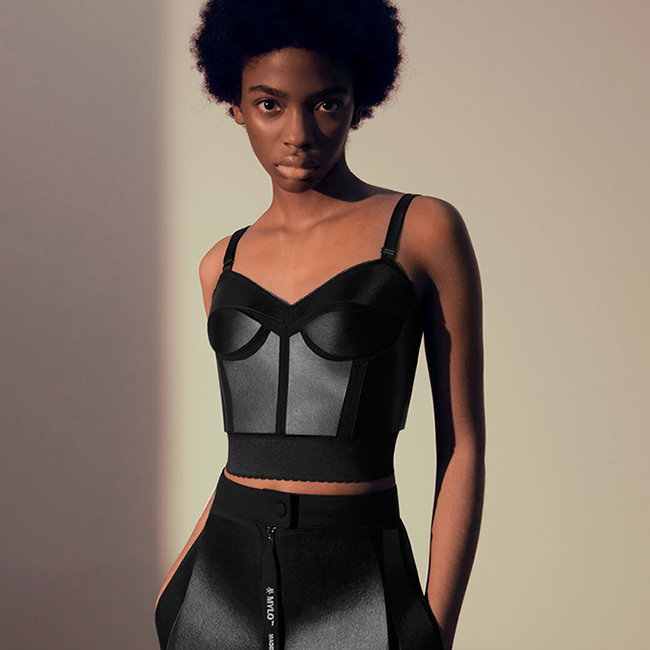
In 2026, it is predicted that US$ 868 million will be spent on global bio-based leathers. According to MarketsandMarkets research, this amount was $647 million last year. The money paid for all synthetic leathers is many times more than that. It’s no surprise that bio-based vegan alternatives are on the rise so quickly. Especially the developments in the last couple of years indicated this. As an alternative leather derivative, vegan leathers have struggled to become available for industries. Talented celebrities of the fashion world supported them in this difficult process.
Stella McCartney, who we all take for granted as a vegan and environmental activist, has long been involved with vegan leathers. He also designed a pair of Stan Smiths for Adidas in 2018, using vegan leather. Speaking of sneakers, the French Veja brand, which we admire, is one of the brands that uses vegan leather. Her fate, too, changed a lot after celebrities began to be photographed with her. Although they did not aim for this, it is now a very famous sneaker brand. What these tell us is that the buyer of products made using vegan leather is ready. Moreover, we are talking about a passionate audience of buyers.
>Consumers of vegan products favor ethical and transparent production
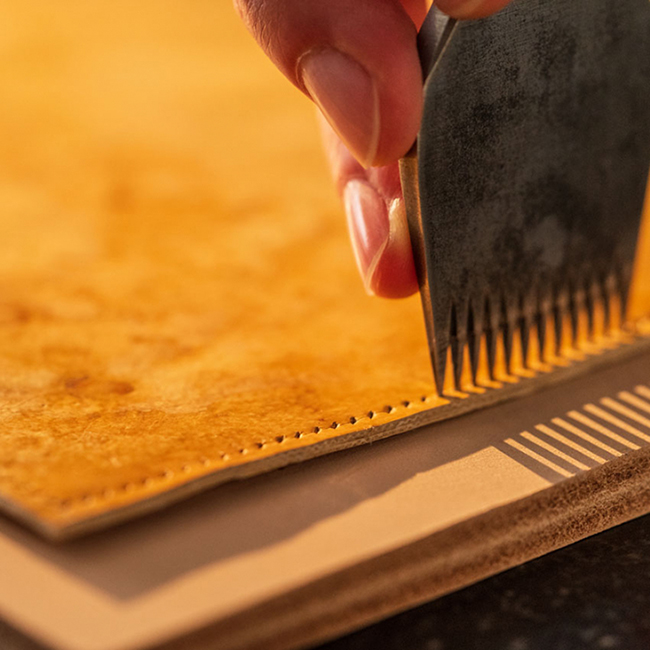
The good news is that there are many brands ready to delight this passionate audience. More and more brands are taking on some of our responsibility towards the planet by producing with bio-based or vegan leathers. The bad news is that these efforts are unlikely to transform an entire leather industry immediately. We are heading towards a world where animals are not killed for their fur and skin, that’s for sure. But until we get there, both we and the brands have to do their part. If we direct our consumption habits to these brands and transfer the necessary courage and money to them, we will not have to wait long.
>So, from which materials is vegan leather made?

You will definitely be surprised when you hear what vegan leather can be made from. Pineapple, cactus, flowers, apples, coconuts, palm leaves and especially mushrooms are natural materials used in making vegan leather. All of them have their own unique color, texture and durability. These natural materials, which are very close to real leather, and some of them turn into high quality end products that do not look like real leather, are the answers to the question of what can be produced vegan leather.
But one in particular has become very popular in recent years and has taken a completely different path and stood out from the vegan skins. In fact, such a quality leather can be obtained that even Hermès made a bag out of it and everyone was amazed by the result. In the rest of our article, we will talk about this miraculous mushroom that will transform the whole world.
>Is it possible for a tiny fungi to transform the world leather industry?
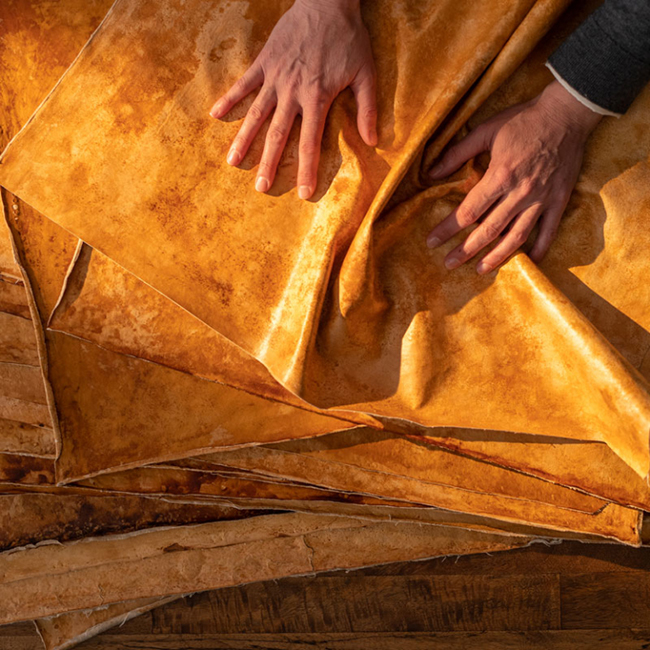
A fungus called mycelium may be a natural alternative to our addiction to leather, and it is as strong and high quality as real leather. A company called MycoWorks produces natural materials with a patented Fine Mycelium process that deliver the performance of the best animal hides with less environmental impact. What it does is very simple, with its unique engineering techniques, it grows these mushrooms on large trays and delivers orders in the dimensions that the industry will need. They call it Mycelium Engineering, and they have now received its registration. Known as a world-class breakthrough in materials science, Fine Mycelium materials offer a superior tactile feel, while adding durability and aesthetics.
Think of it this way, you have a leather supplier where you can order the measurements as you want. The era of designing products by combining parts, cutting and balancing is over. It’s no exaggeration to say that this freedom is just what the creative minds of the fashion and luxury industry are looking for. For MycoWorks, which collaborated with Hermès to make a bag with this miraculous material in the spring of 2021, the day after that has felt like a fairy tale. The company, which has now pocketed an investment of 125 million USD, will invest in a factory large enough to make international sales with this money.
>Will Hermès make its bags from fungi?
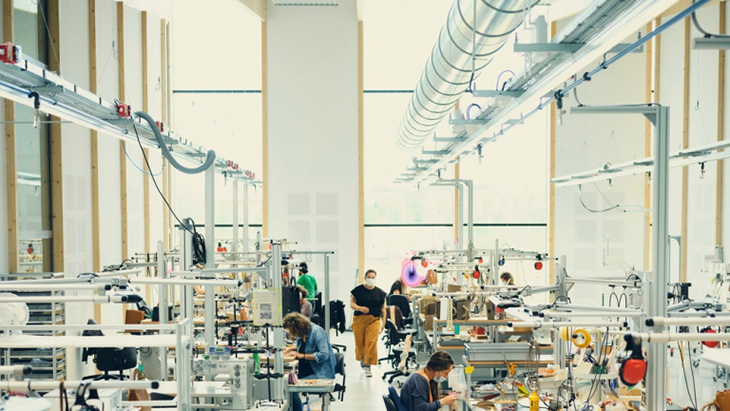
The vegan leather cut by Hermès’ travel bag Sylvania is produced using the Fine Mycelium method in MycoWorks’ facility in California, which was still a small workshop at that time. It is then shipped to France to further improve its strength and durability, where it is tanned and refined by Hermès’ tanners, just like real leather. It is then finalized by Hermès artisans in the brand’s workshops.
Hermès artistic director Pierre-Alexis Dumas expresses his admiration for this vegan leather and its innovative manufacturers:
“MycoWorks’ vision and values reflect those of Hermès. Admiration for natural raw materials and their transformation is shared with our pursuit of excellence that will enable objects to be used in the best way and maximize their longevity. With the Sylvania bag, Hermès is at the center of what it has always been: innovation in manufacturing.”
Would it occur to you that you can praise a fungi from the mouth of the world’s largest luxury leather goods company? Isn’t it amazing what a tiny fungi can accomplish? In fact, the world already offers us applications and materials that will be good for the world. As long as we have an open pair of eyes to see them.
related post
related store

Leave a Reply